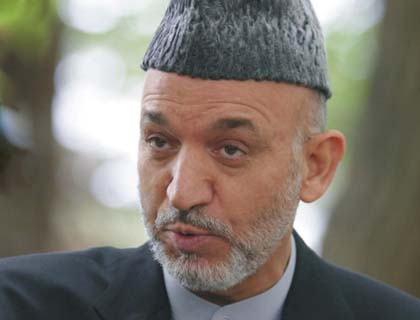The strained relations between Kabul and Washington led Afghanistan on the verge of zero option several times. The White House was fluctuating between hope and despair about Bilateral Security Agreement (BSA) to be signed by President Karzai. US officials appointed deadline for the security pact to be signed declaring that the refusal will be followed by zero option. In addition, financial support was reduced and American officials warned that in case the pact does not get signed, they would cut off their financial support.
But President Karzai pointed the finger at the US soldiers for killing non-combatants and conducting night raid operations on Afghans’ home. Therefore, he set preconditions, which was ending night raid and counterterrorism, for signing Bilateral Security Agreement. He blamed American officials for torturing and humiliating innocent Afghans declaring that Bagram prison was a “Talib-making factory.” Karzai likened the United States to a “colonial power.” Some intellectuals think that he made all these excuses for signing the security pact.
Recently, Karzai has said to Washington Post regarding signing BSA, “The common ground was that both of us [Afghanistan and the US] wanted to be free of terrorism and extremism and to be secure and stable. Now, part of that was achieved for us, the other part was not. And the part that was most important was not achieved, which was security for the Afghan people and protection of Afghan life. And that’s where I have disagreed and that’s where I continue to disagree and raise my voice.”
On his decision in February to release dozens of Taliban captives from a prison at Bagram air base, despite vehement objections from the United States, which had captured the prisoners and judged them too dangerous to set free, President Karzai said, “…This is justice, justice for the Afghan people, and I believe, firmly, that Bagram has in a very serious way violated the rights of the Afghan people. The existence of that prison is a very unfortunate thing for Afghanistan, and has thrown a very serious difficulty at our relationship with America.”
On the security agreement, as with several other issues, Karzai’s antagonistic approach seems to have succeeded, in the sense that he has forced US officials to move deadlines – and even to reshape policy.
His strong criticism of the civilians casualties caused by American attacks, for example, forced the US military to revise its tactics, producing a dramatic decline in the number of civilians murdered by US forces.
His demands that the United States hand over the Bagram prison were met, allowing Karzai last month to release dozens of high-profile detainees despite American’s protests.
It is an undeniable fact that civilian casualties were the ugliest face of the war in Afghanistan. Moreover, the “war on terror” added to the innocent non-combatant casualty toll which was launched in 2001.
In the interview with Washington Post, the salient points of President Karzai’s talks were about the casualties inflicted on the innocents. On an effort to raise concerns with President Obama during a 2010 visit, he said, “I went to Washington and I carried a picture with me. It was a picture of a night raid where an extremely poor family — it’s night and it’s dark in that picture, a frightened, weak, afraid woman sitting there with two or three children around them — and the hand of the man lying there. . . . And this frightened family, looking into nothing, just gazing, with fright and fear. And I took that picture to the president of the United States, and I said, ‘President, this is what I’m trying to end, the intimidation of Afghan families at night, in the name of fighting the Taliban.”
According to President Karzai, the 12-year strategy taken to counter Taliban was wrong. From now on, he decides to take a better strategy – a non violent one. To Afghans’ unmitigated chagrin and surprise, Karzai believes that there is no war in Afghanistan to be fought. When Washington Post interviewer asked him that why does the Taliban remain so strong as a fighting force? Afghan President answered, “I think … that the strategy was wrong, that it causes all the problems that we have, and the continuation or perpetuation of insecurity or conflict if we call it. . . . I believe there is no war to be fought in Afghanistan. I believe that much of the conflict is a creation in which the Afghans suffer, and I want to undo that creation by insisting on the launch of the peace process.”
It must be very bitter words for the victims’ families who have lost their kiths and kin in acts of terror when President Karzai says, “Al-Qaeda to me is more a myth than a reality” or when he says that there is no war to be fought in Afghanistan. If it is so, why tens of innocent Afghan civilians lose their lives in every week by murderous acts carried out by terrorists? Are the heavy casualties suffered by Afghan police and civilians myth? What about the recent murder of 21 Afghan soldiers in Kunar province?
According to Karzai, peace negotiation is a correct strategy to end terrorism. But I think it is highly naïve of the government to persist on this anymore which was not only fruitless but also bore bitter fruit within many years. Of course, Taliban intends to stab Afghan officials in the back in the game of peace talk as they did before by killing the head of High Peace Council (HPC), Professor Burhanuddin Rabbani. Furthermore, it is too late for the Karzai’s government to achieve success in providing peace. It is also worthy of mention that his view regarding terrorism and his new strategy is in serious conflict with Afghan people. Hope Karzai does not ignore the people.

